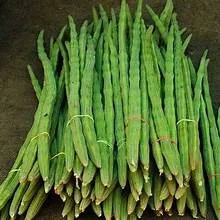Table of Contents
Certainly! Here's a comprehensive article on Indian Vegetables: Cultivation, Irrigation, Storage, Transportation, Availability, Statewide Production, Adaptation, and Exports:
🥦 Indian Vegetables: Cultivation, Infrastructure, and Global Reach
India stands as the second-largest producer of vegetables globally, following China. The country's diverse agro-climatic zones facilitate the cultivation of a wide array of vegetables, contributing significantly to both domestic consumption and international exports.
🌱 Cultivation and Irrigation Practices
Major Vegetable Crops
India's vegetable basket includes:
- Potato: Predominantly grown in Uttar Pradesh, West Bengal, and Bihar.
- Onion: Maharashtra, Karnataka, and Madhya Pradesh are leading producers.
- Tomato: Andhra Pradesh, Madhya Pradesh, and Karnataka dominate production.
- Brinjal (Eggplant): West Bengal and Odisha are major contributors.
- Cabbage and Cauliflower: Extensively cultivated in West Bengal and Bihar.
- Jackfruit: Kerala and Tamil Nadu produces the vast quantity of jackfruit and is transported to various parts of India.
Irrigation Techniques
Efficient irrigation is crucial for vegetable cultivation:
- Drip Irrigation: Widely adopted for crops like tomato and capsicum, especially in water-scarce regions.
- Sprinkler Systems: Utilized for leafy vegetables to ensure uniform water distribution.
- Traditional Methods: Still prevalent in many regions, though modernization efforts are underway.
🏬 Storage and Transportation Infrastructure
Post-harvest management is vital to reduce losses:
- Cold Storage Facilities: India has been expanding its cold storage capacity to preserve perishable vegetables.
- Refrigerated Transport: The use of reefer trucks is increasing, ensuring freshness during transit.
- Processing Units: Value addition through processing (e.g., frozen vegetables) is gaining momentum.
📊 State-wise Production Overview
India's vegetable production is concentrated in several key states:
- West Bengal: Leading in overall vegetable production, with significant outputs of brinjal and cabbage.
- Uttar Pradesh: Major producer of potatoes and peas.
- Bihar: Known for substantial production of cauliflower and okra.
- Madhya Pradesh: Significant contributor to tomato and onion production.
- Maharashtra: Dominates in onion production and has a growing area under capsicum cultivation.
🌍 Export Dynamics
India's vegetable exports have been on an upward trajectory:
- Export Value: In the financial year 2023-24, fruit and vegetable exports rose by 14% to $3.7 billion.
- Key Markets: United States, Europe, Middle East, and neighboring countries like Bangladesh and Nepal.
- Major Exported Vegetables: Onions, okra, bitter gourd, and green chilies are among the top exported items.
🔄 Adaptation and Innovation
To meet both domestic and global demands, India is focusing on:
- High-Yield Varieties: Development of disease-resistant and high-yield vegetable varieties.
- Protected Cultivation: Use of greenhouses and polyhouses for crops like capsicum and cucumber.
- Organic Farming: Increasing adoption of organic practices to cater to health-conscious consumers.
🛡️ Government Initiatives
Several programs support the vegetable sector:
- Operation Greens: Aims to stabilize the supply and prices of tomato, onion, and potato (TOP) crops by promoting Farmer Producer Organizations (FPOs), agri-logistics, and processing facilities.
- Mission for Integrated Development of Horticulture (MIDH): Provides financial assistance for the development of the horticulture sector, including vegetables.
🧭 Conclusion
India's vegetable sector is a vital component of its agricultural economy, providing nutrition, employment, and export earnings. With continued investment in infrastructure, research, and sustainable practices, India is poised to strengthen its position in the global vegetable market.








